The guide to Shetland sweaters: Part one
By Manish Puri
"With winter finally here, one of the items I’m most enjoying getting reacquainted with is the Shetland jumper - ceaselessly stylish, resolutely practical, and keenly priced.
For those reasons, many of the brands on Permanent Style routinely make the Shetland a cornerstone of their winter collections. It is the intention of this guide to help readers sort through the myriad options available.
Part one, today, focuses on general differences in style and construction, which I hope will provide context to help decide which jumper is right for you and why.
Part two - which will be published on Wednesday – details the Shetland offerings from 11 different brands, along with an index that compares the key features.
The history of the wool
“Shetland Wool, taking all its properties together, is perhaps the completest article of the kind in the universe, possessing at the same time, the gloss and softness of silk, the strength of cotton, the whiteness of linen, and the warmth of wool.”
So said Sir John Sinclair, politician, and Shetland wool’s original hype man, in a letter dated September 22, 1790 to his friend and renowned botanist, Sir Joseph Banks.
Banks had been charged by King George III to restore England’s pre-eminence in the wool trade. For centuries wool had been the bedrock of the English economy. However, Spain had seized dominance of the market through the successful growth of their merino flocks - which had gained a reputation throughout Europe as the softest and finest. And they weren’t about to relinquish that grip easily – export of merino sheep was prohibited, on pain of death, through the early 1700s.
Even when Spain did begin to offer gifts of breeding stock to European royal courts in the mid-1700s, the English were most certainly not on the Christmas card list. And Banks, despite Sinclair’s best efforts, was never fully convinced by Shetland wool, complaining that “it does not spring out forcibly when compressed, as the Spanish does” and resorting to smuggling four merino rams and two ewes out of Spain through Portugal.
The arrival of the smuggled merino marked the beginning of using inter-breeding in Britain to improve wool quality and the purebred Shetland, like many other British sheep from that time, began to dwindle in numbers. (It remained on the Rare Breed Survival Trust’s endangered list until 1985.)
Ironically, given their historical lust for merino, it was the royal family that helped revive the fortunes of the Shetland sheep in the 1920s, with Edward VIII (above) championing Fair Isle sweaters in the yarn. In 1927, The Shetland Flock Book Society was formed and was successful in lobbying for subsidies from the Department of Agriculture to support breeding programmes.
By 2011, the importance and value of Shetland wool had improved to such an extent that “Native Shetland Wool” became the first non-food and drink to be awarded Protected Designation of Origin (PDO) status by the European Union.
Shetland’s features
The majority of the knitwear we’ve featured in this guide is made from Shetland wool. But what can one expect from it?
Although it has a reputation for harshness, the yarn produced remains the finest of all British sheep (ranging in thickness from 10 and 35 microns) and is airy and light. So even if you find the wool too coarse to wear against the skin (and require, for example, a shirt rather than T-shirt underneath), it is highly insulating and feels lightweight.
Whilst a lot of Shetland wool is dyed to make the gorgeous kaleidoscope of Fair Isle patterns, the fleeces of Shetland sheep come in 11 natural colours, so there is a terrific array of undyed jumpers available. And often these can be softer than dyed versions.
For those that do find Shetland a little itchy when close to the skin, part two of this guide includes a couple of wool/cashmere blends, and a Shetland-style jumper made from New Zealand geelong - a fine type of merino wool.
Shoulder constructions
My research revealed there are as many as 16 different types of sleeves that could be found on a garment. Mercifully the majority of Shetland jumpers have either raglan sleeves or set-in sleeves – although, given the raw material, surely it would be an apt tribute for someone to knit a Shetland with Leg of Mutton sleeves.
Of those two designs, the raglan sleeve is the one that extends in one piece from cuff to collar, resulting in a diagonal seam from the underarm to the neckline. It was first developed by Aquascutum in the 1850s (when they were still operating as a bespoke and military tailor) for Field Marshal Fitzroy Somerset – who was later raised to the peerage as Baron Raglan.
Somerset fought in the Battle of Waterloo to help defeat Napoleon’s army but sustained an injury to his right arm that necessitated amputation. Channelling the bravery and stubbornness of Monty Python’s Black Knight, Somerset (a lifelong military man) insisted on using his weaker left arm to fight on. Unfortunately, he found his military tunics too restrictive until Aquascutum perfected the ingenious raglan construction with a wider underarm area, affording the wearer greater movement and flexibility.
If you’re off to battle the Russians in Crimea with one arm, as Baron Raglan did in 1854, it is invaluable. If you’re off to battle the crowds on Columbia Road Flower Market with one arm, as the other is busy holding a newly purchased cactus, it’s less critical but still nice to have.
The set-in sleeve is attached to the armhole with a circular seam looping over the shoulder and under the arm. The construction offers a little more shape than the raglan and is thus considered by some to be more formal and better suited for tailored looks.
A third sleeve type which features prominently in the Shetland jumpers we’ve covered is the saddle shoulder (above). The saddle is technically a type of raglan sleeve, where the seam initially follows the same diagonal line of the raglan and then takes a sharp turn at the collarbone and runs parallel to the shoulder until it hits the collar.
Neckline (and height)
The classic style of Shetland knit remains a crew neck, but in part two of this guide we list brands that offer V-necks, roll necks, cardigans, and vests.
Regular readers will be familiar with Simon’s article on the effect of different heights of a neckline and how that affects both style and proportion. Most of the Shetland crewnecks we’ve considered either have necklines with ribbing around 2.25cm/1” that lie flat up to the base of the neck (above - we’ve called this a standard neck) or have chunkier and reinforced necklines with ribbing of around 3cm/1.25” that sit higher on the neck and hold the shirt collar closer to the body.
Unlike say a tailored jacket, there is limited scope for designers to change a crew neck year on year. However, the neckline is one area that does change over time. The standard, lower and looser neck offers room and a glimpse of a tie. The higher and tighter neck is geared to more casual, tie-less ensembles. It’s perhaps unsurprising that there are more higher necklines available today than there were five years ago.
Ply, or thickness
Ply is often used as a shorthand for how thick and heavy a sweater is. The overwhelming majority of the jumpers we’ve featured will be two ply, which means that two threads have been twisted together to make the yarn that has been used to knit the jumper.
As part of Permanent Style’s Guide to Knitwear you can find a detailed article that covers the different ways of categorising knits by gauge, end and ply here.
Knitting in the round
The jumpers that we have featured in our guide are either fully fashioned or knitted in-the-round.
‘Fully fashioned’ is the normal way a jumper is put together, where each panel of a garment is knitted separately and then linked together at the seams.
Shetland jumpers are known for the rarer technique of being knitted in-the-round, however, where small circular knitting machines (above) produce body-sized tubes of fabric. The jumpers produced by this technique are often referred to as seamless, as there are no seams on the body.
What does this mean for the customer? Well, some find seamless construction more comfortable, and because there are fewer ‘weak spots’ from seams, more durable. The downside is that a seamless jumper cannot be tapered in the body, and so often has a boxier fit. It also has a tendency to lose shape more easily, if pulled around or not taken care of.
Finish: pattern and brushing
The focus of this guide is on plain knit jumpers – and this is what the bulk of the market is offering. However, we have recognised where brands are selling other types of knit, so there are also Shetland jumpers using cable, ribbed, striped and Fair Isle techniques.
The other aesthetic aspect Shetland jumpers are famous for is brushing.
Since the Middle Ages woollen fabrics have been brushed by the dried seed heads of the teasel plant (dipsacus sativus). The spikes on this thistle-like plant (which help to protect the seeds) are supreme at loosening and teasing out some of the fibres of the yarn. By raising the nap, the brushing process creates small air pockets that improve the insulation of the yarn whilst also softening the handle and the colour.
We’ve categorised the Shetland jumpers on the market as unbrushed or light brush (brushed 0-1 times), medium brush (2-3 times) and heavy brush (3 or more times). I prefer my (slightly more whimsical) brushing index of peach fuzz, candy floss and Don King, but I suspect this won’t catch on.
A paucity of teasel brushing machines in the market often means the brushed variety of jumpers are a little more expensive than the unbrushed. As part of my commitment to delivering a comprehensive survey to the Permanent Style reader I did stumble upon a Reddit forum where some users claim to have had success in hand brushing their Shetland sweaters using cat brushes. Do not try this at home."
I would like to extend special thanks to James Priestley of William Crabtree & Sons and Uli Schade of Dick’s Edinburgh for their time and help whilst I was writing this guide.
Part two in this series, running through and comparing 11 different brands on the market, will be published on Wednesday.



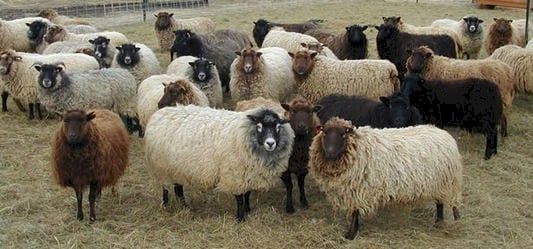
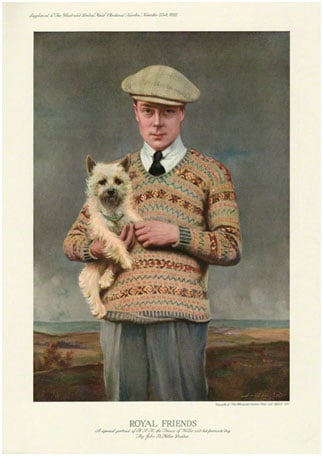
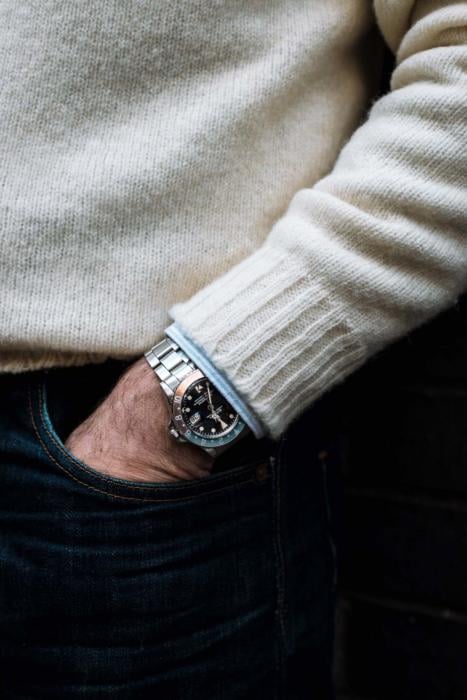
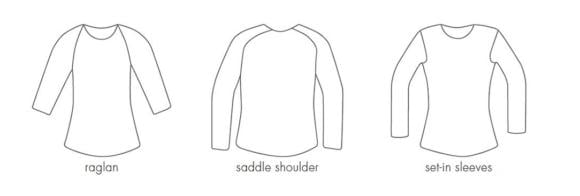


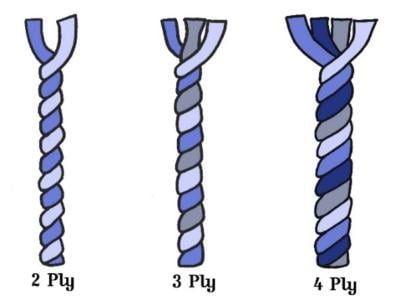

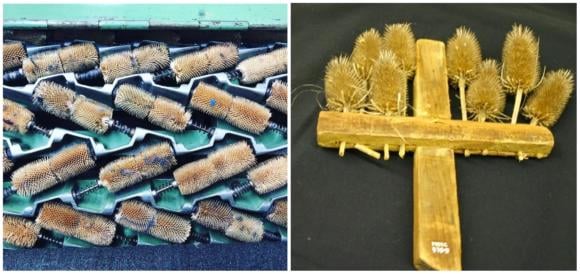
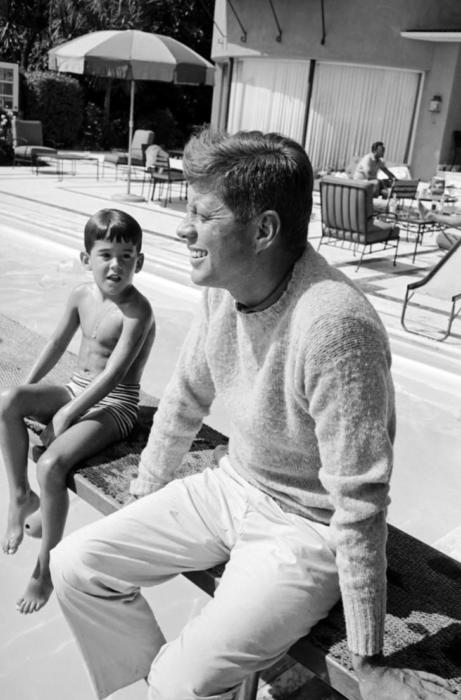
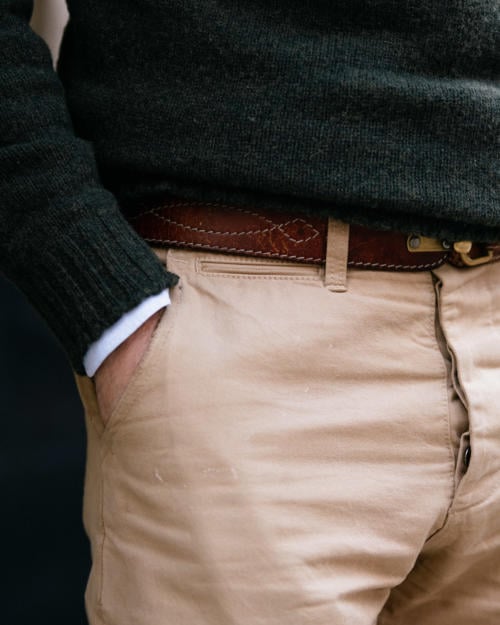


























I think I‘m very much on the side of the fellow who decided to smuggle merino sheep instead of wearing Shetland wool. Really uncomfortable to wear, and I could never get on board with the look of the typical Shetland sweater; very „J. Crew ca. 2006“
indossa del cachemire , tu sei uno da Loro Piana , chi indossa shetland è più da Alberto Aspesi , ma sta sereno , non è importante , ciao
Excellent and timely article as I am looking to acquire a brushed shetland sweater but I am a little lost between the offerings available (J.press shaggy dogs, Bosie, shetlandd woollen, Hartley of Scotland, etc…).
Can Manish, Simon or any reader recommend a good quality product?
Thank you.
Hi Julien – a very long, very analytical breakdown is coming on Wednesday, as part 2 of this article!
bellissima e da salvare anche la 2a , bravo Simon
Basically everything Bosie offers is from Harley. I have a lightly brushed navy Shetland from them and I think it’s great.
Did you find that you had to size down due to a boxy fit or are they true to size compared with the other sweaters you own?
A little boxy, relatively loose in the sleeves, but I personally enjoy that about it. I went true to size. I have a relatively large neck and I found the jumper neck reasonably tight so I don’t think I could’ve sized down for that reason, but everything else I probably could’ve.
Drake’s brushed shetland is quite nice and it has a modern fit.
qui , per una volta , trovi TUTTE le informazioni ( e anche qualcuna in più ) per procedere all’acquisto , in ogni caso ha tralasciato un fornitore importante … ma non importa , ciaoJulien
Great Article. Well done Manish.
Thank you so much, Dominic!
One of the many appeals of Shetland IS its scratchiness.
I agree; I love the scratchy feeling.
Interesting article and rather timely. Although, I’m shopping for a submariner at the moment.
On that note , if you would permit Simon, discovered a UK product “Paul James Knitwear” .
All Blues Co carries Shetland submariners from Harley!
I recently bought a white ribbed fisherman’s jumper from Paul James in cotton – I am quite pleased with it. The cuffs are nice and tight too.
I have been buying Paul James for a while. Not as high quality as many brands featured here but excellent price/ quality ratio.
I have a couple of Shetlands from different companies. In fact, I discovered Shetland sweaters due to a Permanent Style article on an Anderson Shepherd one that Simon recommended.
Simon, do you consider a Shetland as casual and not typical office wear? Or, if you were it to the office, i.e. casual but professional environment, how and what would you wear it with?
It’s not typical office wear, no, but I’m assuming a fairly smart office – at the least, tailored trousers, dress shirts.
If people are more in chinos and oxfords, then I think it’s probably fine. I’d start with smarter colours like navy or grey, and wear them over a button down shirt
A very enlightening, informative and itch provoking read I highly look forward to reading part 2
Hi Manish,
I always find this type of article extremely interesting for general knowledge. Please don’t infer anything negative, by lack of comment, you covered so much that I personally couldn’t think of any worthwhile questions.
One ask is when you cover brands please don’t overlook Uniqlo as I have had a dark brown Shetland sweater that has served me well for 3 years for less than £30. An often overlooked brand. Similarly I have one with a saddle shoulder from Marks and Spencer that’s still in great condition that’s at least 8 years old and has stood up well to wear and looks nicely (foxed) ‘worn in’.
Whilst not the usual price point for PS, both sweaters have lasted well and demonstrate that sustainability need not always come with a hefty price tag!
Hi Stephen,
Thank you so much for your comment – nothing negative inferred at all 🙂
I’m afraid the second part is already written. However, I did look into Uniqlo (anyone that read my PS profile knows I’m a fan) but just couldn’t find anything that was definitively Shetland wool – which is what we really wanted to focus on.
The only Shetland-style jumpers they had were listed as lambswool (which I think are the same as your dark brown). They look decent value but I was hesitant to start showing lambswool options as I’d still be writing the article next summer. Even with a Shetland wool restriction the article has turned out pretty lengthy!
I hope that makes sense but I know that your comment will be a invaluable postscript to the articles as it’s always great to get recommendations on pieces that have withstood the test of time.
Best wishes!
Hi Manish, Thanks and you are quite correct I was mixing the two up.
All the best.
I was regularly sent to primary school in a variety of home knit shetlands-it was like wearing a nettle shirt until broken in.
Many years later, I wore a black Shetland(Dicks),on dress down Friday, and it was the sole topic of conversation.
The tone of this informative article was enjoyable and made me chuckle. Looking forward to Wednesday.
Well done. I don’t find Shetland wool particularly scratchy, but I shudder at the thought of wearing a sweater without a collared shirt underneath just from a style perspective. I think it’s the type of naff look best left to the bouncers at Bulgarian discos.
Bravissimo Simon , questo sui maglioni di shetland , per una volta , mi è piaciuto , molto molto molto bravo , 3 volte bravo , …. bravissimo . Ciao
Hi Simon,
Where is you off-white sweater from, and in what size? What would be the color name from the brand (eccru, cream)?
Thanks
It’s from Trunk, size Medium. I’d call the colour ecru or cream, yes.
Hi Simon,
Always enjoying your articles on the history, evolution & processes of material which often answers hunches re the subject matter or corrects any misunderstandings.
It would see that Shetland managed to get EU protection & recognition while Donegal yarns still await – how ironic considering Brexit. That said & as a consequence I still contact producers/ retailers to ensure that the yarns used are in fact from Donegal & not generic; I hope Donegal yarns eventually gain similar protection.
As for Shetland jumpers I have two from Drake’s; a brushed cable which I wore today on a relatively colder day with just a tee shirt under & gilet – very warm & light. I bought the medium ( normally large at A&S ) which fits fine but in hindsight might have been better with a large for longer arm & body length fit should it shrink. Another is a Drake’s Fair Isle sleeves jumper with an enlarged slightly blurred pattern & muted heather colours. Again medium & great body hugging ? warmth in winter under a Harris Tweed jacket – & no need for a coat.
Regarding raglan sleeves these are often used on Fishermen/ boatbuilders I jumpers for their manoeuvrability & durability. As for who invented it first it might be harder to say, but Raglan & Cardigan seem to have cornered the knitwear market in Crimea.
Simon, I notice that your jumpers cuffs are not turned up in any of the shots. As a kid I was lectured that this was a Rule (see Jagger). Is it random in your case or do you have a take on this?
I certainly don’t think it could be said to be a rule, Nico, but it can be a nice, casual touch.
The problem is it’s not really possible unless you have arms that are rather shorter than the sweater is made for (which I don’t) or the sweater was made to have turnback cuffs, which few shetlands are.
When it’s not made to be turned back, you can see the seam on the inside usually. When it is, you see a seam when the cuff isn’t turned back. Rubato knits are good examples of ones made to be turned back, as are our Dartmoors.
Hi Simon,
Just going through these two articles again, could you please give the make of the two Shetland jumpers, in particular the off white & charcoal. Many thanks & have a good Christmas.
They’re both Trunk, Steve. But the bottom one is dark green, not charcoal
Thanks Simon, I realised the charcoal as green straight after posting, many thanks.
No worries
I found the Don King remark somewhat inappropriate, given the cultural issues about black American hairstyles.
Phenomal artictle!
Where are the taupe trousers from? The ones pictures with the white/ecru sweater.
From Stoffa – see article here
Great deep dive into Shetland knits! Ended buying a couple of Jamieson’s over the Christmas period. Where are the trousers Simon is wearing in photo 6/13? Also on the lookout for a new spring jacket, my wife says no more field jackets but anything short/blouson doesn’t suit me
They’re Stoffa chinos in their basketweave cotton
Hi Simon,
I was wondering if shetland sweaters pull, especially on something like a shantung silk tie? Thank you in advance.
I assume you mean pill? Yes they will often pill a little over time. Get a brushed one if you want to avoid that completely. Or care for it well, as in this video.
With a tie, presumably any rubbing would only happen inside the sweater?
Do you know where I can brush a sweater? Bosie offers brushing service but only for sweaters that were bought from them
No, sorry Thomas.
Hey Simon,
Where is the stitched leather belt in the last photo from? Thanks, Ford
It’s vintage I’m afraid Ford
Thanks for these Shetland wool articles. Very interesting. I always wondered about the different shoulder seams.
No worries. Please that was helpful